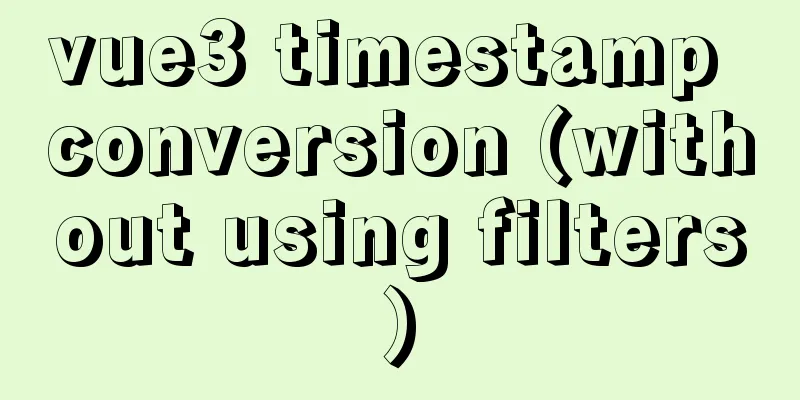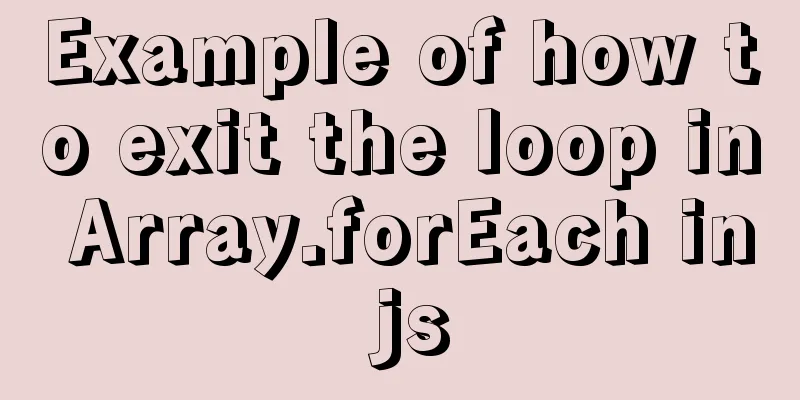Simple implementation method of two-way data binding in js project

PrefaceTwo-way data binding means that when the properties of an object change, the corresponding UI can be changed at the same time, and vice versa. In other words, if we have a user object that has a name property, whenever you set a new value for user.name, the UI will also display the new value. Likewise, if the UI includes an input box for a data user's name, entering a new value will cause the name property of the user object to be updated accordingly. Many popular JavaScript frameworks like Ember.js, Angular.js or KnockoutJS promote two-way data binding as one of their main features. This doesn’t mean it’s hard to implement it from scratch, nor does it mean that using these frameworks is our only option when we need this kind of functionality. The underlying idea is actually quite basic, and implementing it can be boiled down to the following three points:
Publish-Subscriber PatternThe publish-subscribe model is actually a one-to-many dependency relationship between objects. When the state of an object changes, all objects that depend on it will be notified of the state change. The subscriber registers (Subscribe) the event he wants to subscribe to to the dispatch center (Event Channel). When the publisher (Publisher) publishes the event (Publish Event) to the dispatch center, that is, when the event is triggered, the dispatch center uniformly dispatches (Fire Event) the processing code registered by the subscriber to the dispatch center. result
CallHTML call end binding data-bind-phone="name"
<ul>
<li class="block-phone fix bd-bottom">
<label for="J_verificationPhone" data-bind-phone="tishi"><span>Phone number</span></label>
<input class="fix1" id="J_verificationPhone" data-bind-phone="name" name="phone" type="text" />
<button class="right J_clickTime" type="button">
<span class="award-messages-btn2 J_messagesBtn1">Get verification code</span>
<span class="award-messages-btn2 J_messagesBtn2 none"><i>Resend after 60</i> seconds</span>
</button>
</li>
<li class="block-verification fix">
<label for="J_verificationCode"><span>Verification Code</span></label>
<input class="fix1" data-bind-code="tishi" id="J_verificationCode" data-bind-phone="name" name="verification-code" class="" type="" />
</li>
</ul>
js call see the following code comments
/**
* function verificationCallback callback method* [$btn1 description]
* data-bind-phone="name"
* @message {[type]} The changed field phone
* @prop_name {[type]} value name of the field
* @target {[type]} target jsdom object;
* @targetValue {[type]} value of the target jsdom object
*/// Listen to the callback function, the function will get the value of targetvalue, target js dom object, which is convenient for operating the changed fields! ! !
var User = require('../../entry/module/twoWayAudio.js');
var phone = new User('phone',verificationCallback);
function verificationCallback(message,prop_name,target,targetValue){
}
Imported source code twoWayAudio
function DataBinder(object_id,verificationCallback){
// Create a simple pubSub object var pubSub = {
callbacks: {},
on: function(msg,callback) {
this.callbacks[msg] = this.callbacks[msg] || [];
this.callbacks[msg].push(callback);
},
publish: function(msg) {
\
this.callbacks[msg] = this.callbacks[msg] || [];
for (var i = 0, len = this.callbacks[msg].length; i < len; i++) {
this.callbacks[msg][i].apply(this,arguments);
};
}
},
data_attr = "data-bind-" + object_id,
message = object_id + ":change",
changeHandler = function(event) {
var target = event.target || event.srcElement, // IE8 compatible prop_name = target.getAttribute(data_attr);
if (prop_name && prop_name !== "") {
if (verificationCallback) {
var targetValue = target.value;
verificationCallback (message,prop_name,target,targetValue);
}
pubSub.publish(message,prop_name,target.value);
}
};
// Listen for event changes and proxy to pubSub
if (document.addEventListener) {
document.addEventListener("keyup",changeHandler,false);
} else{
// IE8 uses attachEvent instead of addEventListener
document.attachEvent("onkeyup",changeHandler);
};
// pubSub propagates changes to all bound elements pubSub.on(message,function(event,prop_name,new_val){
var elements = document.querySelectorAll("[" + data_attr + "=" +prop_name + "]"),
tag_name;
for (var i = 0, len = elements.length; i < len; i++) {
tag_name = elements[i].tagName.toLowerCase();
if (tag_name === "input" || tag_name === "textarea" || tag_name === "select") {
elements[i].value = new_val;
} else{
elements[i].innerHTML = new_val;
};
};
})
return pubSub;
}
function User(uid,verificationCallback) {
var binder = new DataBinder(uid,verificationCallback),
user = {
attribute : {},
// The attribute setter uses the data binder pubSub to publish set : function (attr_name, val) {
this.attribute[attr_name] = val;
binder.publish(uid + ":change",attr_name,val,this);
},
get : function (attr_name) {
return this.attribute[attr_name];
},
_binder : binder
};
binder.on(uid + ":change",function(event,attr_name,new_val,initiator) {
if (initiator !== user) {
user.set(attr_name,new_val);
}
});
return user;
}
module.exports = User;
// phone.set( "name", "lwl" );
// phone.set( "tishi", "提示" );Alternative solutions The above is just a cover for two-way data binding. In fact, this requirement can be implemented more simply.
$('.block-phone #phone')[0].oninput=function(){
console.log($(this))
}
SummarizeThis concludes this article on the simple implementation method of two-way data binding in js projects. For more relevant js two-way data binding implementation content, please search for previous articles on 123WORDPRESS.COM or continue to browse the following related articles. I hope everyone will support 123WORDPRESS.COM in the future! You may also be interested in:
|
<<: The most convenient way to build a Zookeeper server in history (recommended)
>>: Detailed explanation of mysql MGR single-master and multi-master mode switching knowledge points
Recommend
CocosCreator Getting Started Tutorial: Network Communication
Network Communication Overview When developing an...
Detailed explanation of Linux inotify real-time backup implementation method
Real-time replication is the most important way t...
Docker network mode and configuration method
1. Docker Network Mode When docker run creates a ...
How to install PHP7 Redis extension on CentOS7
Introduction In the previous article, we installe...
Detailed tutorial on VMware installation of Linux CentOS 7.7 system
How to install Linux CentOS 7.7 system in Vmware,...
mysql8.0.11 winx64 installation and configuration tutorial
The installation tutorial of mysql 8.0.11 winx64 ...
Implementation of Nginx hot deployment
Table of contents Semaphore Nginx hot deployment ...
Example of building a Jenkins service with Docker
Pull the image root@EricZhou-MateBookProX: docker...
Solve mysql: ERROR 1045 (28000): Access denied for user 'root'@'localhost' (using password: NO/YES)
1. Problem Sometimes when we log in to Mysql and ...
MySQL 8.0.12 installation graphic tutorial
MySQL8.0.12 installation tutorial, share with eve...
How to redirect to https through nginx load balancing
Copy the certificate and key on the web scp -rp -...
Summary of basic knowledge points of Linux group
1. Basic Introduction of Linux Group In Linux, ev...
The implementation process of long pressing to identify QR code in WeChat applet
Preface We all know that the QR codes in official...
Summary of techniques for implementing complex page layout using frameset
Copy code The code is as follows: <html> &l...
Discussion on the way to open website hyperlinks
A new window opens. Advantages: When the user cli...










